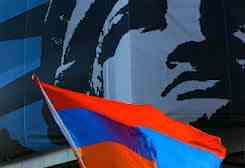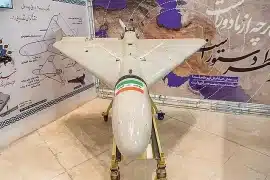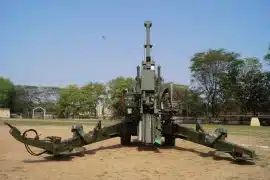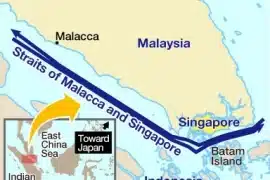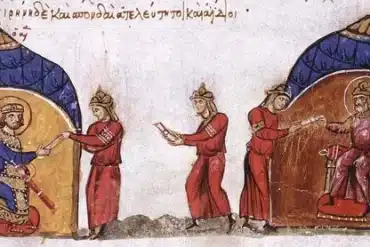The BMP-2 Infantry Fighting Vehicle, a formidable armored vehicle, emerged in the late 1970s as an improved successor to the BMP-1. Born from development that began in the early 1970s, the BMP-2 swiftly addressed many of the shortcomings of its predecessor. Entering Soviet Army service in 1980 and publicly unveiled in 1982, this infantry fighting vehicle quickly became a mainstay, with an estimated 20,000 vehicles produced for the Soviet Army alone.
Global Reach
The BMP-2’s influence extended beyond the Soviet borders as it was license-produced in countries such as Czechoslovakia (as the BVP-2) and India (as the Sarath). Variants of this versatile vehicle, including the Bulgarian BMP-30, came up as well. It played a crucial role numerically among Eastern Bloc combat vehicles and found its way to Soviet allies. Today, the BMP-2 serves as a vital asset for various nations worldwide, including Afghanistan, Algeria, India, Iran, and many others.
BMP-2: Design and Agility
Retaining the general design of the BMP-1, the BMP-2 is a low, agile, and reliable vehicle. It has ample engine power to navigate various terrains.
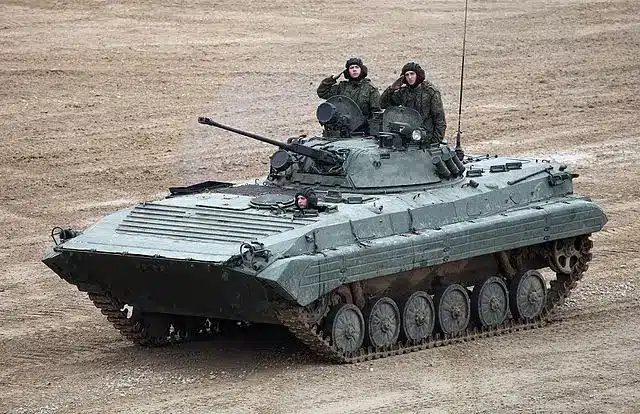
Late production models featured improvements such as enhanced fire control, extra armor in strategic areas, and layout alterations for improved efficiency.
Enhanced Firepower
One of the most notable improvements of the BMP-2 over its predecessor was the introduction of a new two-man turret. The standout feature was the replacement of the BMP-1’s non-stabilized 73 mm low-velocity gun with a fully-stabilized dual-fed 30 mm cannon. This versatile cannon fires a range of ammunition types, including HE-FRAG, HEI-T, and armor-piercing tracer (APDS-T) rounds. Capable of engaging armored targets up to 2,000 meters away, ground targets at 4,000 meters, and helicopters up to 2,500 meters, the 30 mm cannon brought increased versatility to the BMP-2. Coaxially mounted is a 7.62 mm machine gun. Some BMP-2 IFVs are additionally equipped with a 40 mm automatic grenade launcher.
Anti-tank guided weapons (ATGWs) such as the Fagot (AT-4 Spigot) or Konkurs (AT-5 Spandrel) launchers can be mounted on the turret. This offers maximum ranges of 2,000-2,500 meters and 4,000 meters, respectively. Portable ATGW launchers for these missiles remain inside the vehicle.
Protection and Interior
The BMP-2 has welded steel armor that provides protection against 12.7 mm rounds. However, being an older vehicle, it lacks protection against landmines. While it may survive small roadside explosions, it’s vulnerable to more significant blasts. The BMP-2 does feature NBC protection and automatic fire suppression systems.
The interior, though somewhat cramped, accommodates seven troops. A notable change is the relocation of the vehicle commander from a position behind the driver to the turret. Each soldier has their own firing port and associated vision block.
Power and Amphibious Capability
Powered by a UTD-20S1 turbocharged diesel engine developing 300 hp, the BMP-2 shares a near-identical transmission and running gear. It is an improvement over the BMP-1’s engine. It utilizes a manual transmission, which allows for easy removal and replacement of the engine and transmission in field conditions.
The BMP-2 is fully amphibious, using its tracks for propulsion in water. However, Russian military forces rarely exploit this capability due to various operational challenges, such as difficulties in shallow waters, issues with trim vanes, and open hatches leading to instances of sinking.
BMP-2: Variants and Beyond
Numerous BMP-2 variants have emerged over the years, including command vehicles, armored engineering vehicles, and armored ambulances. In 1987, production began on the BMP-3, a design distinct from the BMP-2 and its predecessor, the BMP-1.
Summary of the BMP-2 Infantry Fighting Vehicle
In conclusion, the BMP-2 Infantry Fighting Vehicle, born out of lessons learned from the BMP-1, has become a pivotal asset in the arsenals of many nations. With its improved firepower, protection, and versatility, it continues to serve as a reliable workhorse in modern conflicts. Whether engaging armored targets or transporting troops into the heat of battle, the BMP-2 remains an enduring symbol of armored infantry support and mobility.



